Art and History in Bali
Bali’s art and history are deeply intertwined with its rich cultural heritage, spirituality, and natural beauty. Known for its unique style, Balinese art is often symbolic and spiritual, featuring vibrant paintings, intricate wood carvings, and beautiful textiles like Batik and Ikat. The island’s history dates back over a thousand years, influenced by Hindu and Buddhist traditions, which are reflected in its temple architecture, rituals, and mythology.
HISTORYART

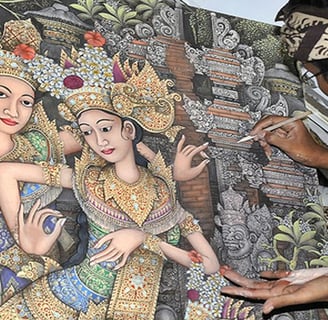
Art and History in Bali
Planning a trip to Bali? Want to avoid the crowds and enjoy art and history? The best time to visit is from April to October, the dry season. For cooler weather and fewer tourists, June or September are ideal.
Sanur, a charming coastal town, is perfect for art and history enthusiasts.
Bali's culture is a mix of ancient traditions and modern influences. You'll see everything from intricate temple carvings to vibrant paintings. Sanur, once a quiet fishing village, is now a centre for both traditional and modern Balinese art.
During your stay, you'll have time to explore off-season spots. Visit the Blanjong Pillar, Bali's oldest known artifact, for free.
For a deeper look into Balinese culture, check out the Bali Museum in Denpasar. Entry costs about 30,000 IDR (roughly $2 USD). Don't miss the Museum Le Mayeur, a hidden gem showcasing Belgian painter Adrien-Jean Le Mayeur de Merprès's works.
Key Takeaways
Visit Bali during the dry season (April to October) for optimal weather
Sanur Bali offers a perfect blend of art, history, and coastal charm
Explore off-season attractions like the Blanjong Pillar and Bali Museum
June and September provide cooler temperatures and fewer crowds
Immerse yourself in Balinese culture through art galleries and historical sites
The Cultural Heritage of Bali's Ancient Kingdoms
Bali's rich culture comes from ancient civilizations, royal support, and new artistic ideas. This island is famous for its beautiful beaches and lively culture. Its history is as colourful as its landscapes.
Pre-Hindu Influences and Early Settlements
Before Hinduism came, Bali's first people started a unique culture. They left behind stone tools and bronze pieces, showing a smart society. Their love for nature and spirits still shapes Balinese culture today.
The Majapahit Empire's Legacy
The Majapahit Empire greatly influenced Bali. This powerful kingdom from Java introduced new art, religion, and social ways. You can see this in Bali's buildings, dances, and ceremonies, especially in east Bali.
Royal Courts and Artistic Patronage
Bali's royal courts were key in growing the arts. Kings and nobles supported artists, performers, and built grand places. This support made Balinese art bloom, attracting visitors to the island's beaches.
Traditional Balinese Art Forms and Their Evolution
Balinese culture shines in Sanur art scene. This seaside town is filled with traditional art forms that have grown over centuries. Painting, sculpture, and textiles are key to Balinese art, each sharing stories of the island's past.
Sanur's galleries show off stunning Balinese paintings. The Kamasan style, known for its flat views and mythological themes, is a hit with collectors. Today, artists mix old techniques with new subjects, showing the art's lively spirit.
Sculpture is vital in Balinese culture. Stone and wood carvings decorate temples and homes, showing gods, demons, and mythical beings. In Sanur, artists keep this tradition alive, making detailed pieces that show Bali's spiritual side.
Textile arts, like batik and ikat, highlight the island's skill in fabric design. These old methods are now seen in Sanur's shops, where traditional patterns meet modern fashion.
"Art is the heartbeat of Bali, pulsing through every aspect of life in Sanur," says local artist Wayan Sukada.
The growth of these art forms shows Sanur's skill in keeping traditions alive while welcoming new ideas. As art lovers from all over visit, Sanur solidifies its role as a protector of Balinese culture.
Sacred Architecture and Temple Design
Balinese culture is celebrated through its sacred architecture and temple design. These structures are more than places of worship. They are living art galleries that display the island's rich heritage. For those planning a tropical vacation in east Bali, exploring these temples is a must.
Temple Layout and Symbolism
Balinese temples have a specific layout that mirrors the cosmic order. They are divided into three courtyards, each representing a different realm. The outer courtyard is for humans, the middle for gods and ancestors, and the inner sanctum is the most sacred.
Architectural Elements and Ornamentation
The beauty of Balinese temples lies in their intricate details. Stone carvings, wooden sculptures, and colorful textiles adorn these structures. Split gates, known as candi bentar, mark the entrance to temples. Inside, you'll find pavilions with thatched roofs and ornate pillars that showcase the craftsmanship of local artisans.
Famous Temple Complexes
East Bali is home to some of the most stunning temple complexes on the island. Here's a quick guide to three must-visit temples:
1. Pura Blanjong
Location: Sanur
Highlights:
- Historical Significance: Dating back to the 10th century, Pura Blanjong is one of the oldest temples in Bali. It is famous for its ancient stone pillar inscribed with Old Balinese and Sanskrit scripts, offering a rare insight into Bali’s early history .
- Cultural Experience: The temple is a peaceful spot to observe traditional Balinese rituals and ceremonies, providing a deeper understanding of the island’s spiritual practices.
- Accessibility: Located within Sanur, it’s easily accessible for visitors staying in the area.
2. Taman Ayun Temple
Location: Mengwi (approx. 30 minutes from Sanur)
Highlights:
- Architectural Beauty: Built in 1634, this temple is surrounded by expansive gardens, lotus-filled ponds, and a moat, showcasing traditional Balinese architecture .
- Serene Atmosphere: The temple’s tranquil setting makes it an ideal place for reflection and photography, especially during early morning or late afternoon visits.
- Cultural Insight: As a UNESCO World Heritage Site, Taman Ayun offers a glimpse into Bali’s royal heritage and religious traditions.
3. Pura Tanjung Sari
Location: Padangbai (approx. 1 hour from Sanur)
Highlights:
- Scenic Setting: Located near Pura Silayukti and Telaga Mas, this temple complex offers stunning views of the coastline and surrounding landscapes .
- Spiritual Retreat: The temple’s serene environment makes it a perfect spot for meditation and connecting with nature.
- Cultural Exploration: Visitors can explore multiple temples within the complex, each with its own unique history and significance.
These temples not only highlight Bali’s rich cultural and spiritual heritage but also provide a peaceful escape from the bustling tourist areas. Whether you’re a history enthusiast, a spiritual seeker, or simply a curious traveler, these temples are sure to leave a lasting impression.
Sanur: A Historical Art Hub
Sanur is a beautiful seaside town that has always drawn artists and art lovers. Its rich culture and stunning views have inspired many for years.
Colonial Period Artists
In the early 1900s, Sanur became a magnet for Western artists. They fell in love with its natural beauty and unique culture. Their work introduced Balinese art to the world, sparking interest globally.
Modern Art Galleries
Today, Sanur Bali is alive with art. It has many modern galleries showing both local and international artists. These galleries mix traditional Balinese art with modern styles, offering a wide range of artistic experiences.
Cultural Preservation Efforts
The people of Sanur work hard to keep their artistic heritage alive. They support traditional craftspeople and promote cultural learning. This ensures Sanur Bali stays a vibrant art center while keeping its true charm.
Traditional Crafts and Artisanal Heritage
Bali's rich artisanal traditions are a big part of its culture. These crafts, deeply rooted in Balinese culture, give visitors a peek into the island's artistic soul. They do this during their tropical vacation.
Woodcarving is a standout craft in Bali. Skilled artisans turn local woods into detailed sculptures, masks, and decorations. Their work often shows scenes from Hindu epics or everyday life in Bali.
Metalwork is also highly respected. Silversmiths in east Bali make beautiful jewelry and decorative items. Their methods, passed down through generations, mix traditional patterns with modern designs.
Textile arts are key in Balinese culture. Batik and ikat fabrics show the islanders' skill in dyeing and weaving. These vibrant textiles are used in ceremonies and are popular among collectors worldwide.
"Our crafts are not just products; they are stories of our ancestors, our beliefs, and our way of life," shares a local artisan from Ubud.
Today, these traditional crafts are more than cultural treasures. They are also crucial for Bali's economy. They provide jobs for many families and draw tourists who want to see real Balinese artistry.
Performing Arts and Dance Traditions
Balinese culture is vibrant through its performing arts. In Sanur Bali, these traditions come alive. They offer visitors a glimpse into the island's rich heritage. The seaside town is a perfect backdrop for these enchanting displays of artistry.
Sacred Dance Forms
Balinese sacred dances are spiritual acts. They connect dancers with divine forces. The Legong dance, with its graceful movements and intricate finger gestures, is a prime example.
Young girls perform this dance. Their faces are painted golden, eyes wide with dramatic expressions.
Ceremonial Performances
Ceremonies in Bali often feature elaborate dance performances. The Barong dance, depicting the eternal battle between good and evil, is a must-see. Masked dancers move to hypnotic gamelan music, telling ancient stories through their movements.
Musical Accompaniment
No Balinese dance is complete without its signature soundtrack. The gamelan orchestra, with its metallophones, gongs, and drums, creates a mesmerizing soundscape. This unique music is integral to Balinese culture, setting the rhythm for both sacred and secular performances.
Visitors to Sanur Bali can experience these art forms firsthand. Many hotels and cultural centers offer nightly performances. This allows tourists to immerse themselves in the beauty of Balinese dance and music. It's a magical way to connect with the island's spiritual essence and artistic legacy.
Modern Art Movement in Balinese Culture
Bali's art scene has grown, mixing old and new styles. This mix makes Sanur Bali a top spot for art lovers. It's a beach resort with a rich cultural scene.
Contemporary Artists
Balinese artists are now famous worldwide. Nyoman Masriadi is one, known for his bold paintings. His work sells for high prices, showing how much people love Balinese art.
Another star is Made Wianta. He creates abstract art that blends old traditions with new ideas. His work is in galleries in Sanur Bali, making it a cultural hotspot.
Fusion of Traditional and Modern Styles
Balinese art combines old and new in a special way. Artists use traditional themes and materials in modern art. This appeals to both locals and visitors.
In Sanur, you can see new takes on traditional dances. These performances mix old and new, offering a fresh look at Bali's culture.
Religious Influences on Balinese Art
Balinese culture is deeply rooted in religious beliefs. These beliefs shape every aspect of life, including art. The mix of Hinduism and local traditions creates a unique art form seen across the island.
Religious themes are common in Balinese art. Paintings often show scenes from Hindu epics like the Ramayana and Mahabharata. Sculptors make detailed stone and wood carvings of deities and mythological figures. These adorn temples and public spaces.
The island's sacred architecture shows this spiritual influence. Temples have ornate gates, multi-tiered roofs, and symbolic decorations. Each part has deep religious meaning, telling the story of Balinese beliefs.
"Art in Bali is not just for aesthetics; it's a form of prayer and devotion," explains a local artist from a seaside town in east Bali.
Performing arts are also key in religious expression. Traditional dances like the Barong and Legong are sacred rituals. They connect the physical and spiritual worlds.
Good vs. evil, spiritual balance
This connection between religion and art keeps Balinese culture alive. It passes down traditions to new generations. Visitors can see this heritage in every corner, from ancient temples to modern galleries.
Art Museums and Cultural Centers
Sanur is more than a beach resort. It's a doorway to Bali's rich art and culture. The area has many art museums and cultural centres that show off the island's creativity.
Notable Collections
The Museum Le Mayeur in Sanur has amazing works by Belgian painter Adrien-Jean Le Mayeur de Merprès. His paintings show the beauty of Balinese life and landscapes. They give visitors a peek into the island's history.
Educational Programs
In Sanur , many cultural centres offer hands-on workshops. You can learn to make traditional crafts like batik or wood carving. These programs help you understand Balinese art and culture better, making your vacation richer.
Exhibition Spaces
The Griya Santrian Gallery, in a popular beach resort, shows contemporary Balinese art. It's great for art lovers to visit while enjoying Sanur's beaches. These spaces mix art appreciation with the relaxing vibe of a tropical vacation.
FAQ
What makes Sanur unique as an art destination?
Sanur stands out as an art destination. It combines traditional Balinese culture with modern art. The town's seaside setting is perfect for creativity, with many art galleries and workshops.
Its history as a colonial-era artist hub has grown into a vibrant contemporary art scene. This makes it a top spot for art lovers on vacation.
What types of traditional Balinese art can I experience in Sanur?
In Sanur, you can see many traditional Balinese art forms. These include detailed paintings, wood carvings, stone sculptures, and textile arts like batik. You'll also find captivating performances of sacred dances and traditional music.
Many beach resorts in the area showcase these art forms. This lets visitors dive deep into Balinese culture.
Are there any significant temples or architectural sites to visit in Sanur?
Yes, Sanur has several important temples and architectural sites. Pura Blanjong is famous for its ancient stone pillar with inscriptions from the 10th century. Pura Segara temple, located on the beach, is another must-see. It beautifully shows traditional Balinese temple architecture and offers stunning ocean views.
How has modern art influenced Balinese culture in Sanur?
Modern art has greatly influenced Balinese culture in Sanur. It has created a mix of traditional and contemporary styles. Local artists now use old techniques with new themes and mediums.
This change is seen in Sanur's art galleries. Artists are reinterpreting traditional motifs and stories in a modern way. This adds a new layer to the town's artistic scene.
What cultural events or festivals related to art can I attend in Sanur?
Sanur hosts many cultural events and festivals. The Sanur Village Festival is a big event that showcases local art, music, and food. During Nyepi, the Balinese New Year, you can see the colourful Ogoh-Ogoh parade.
Many hotels and cultural centres in Sanur also organize art exhibitions, dance performances, and craft workshops. These offer great chances to experience Balinese culture.
Are there any art museums or cultural centres I should visit in Sanur?
Yes, Sanur has several notable art museums and cultural centres. The Le Mayeur Museum is dedicated to Belgian painter Adrien-Jean Le Mayeur de Merprès. The Griya Santrian Gallery regularly features exhibitions by local and international artists.
For a deeper experience, the Taman Budaya Bali (Bali Art Center) in nearby Denpasar offers a wide view of Balinese performing arts. It hosts regular cultural events.
How can I learn about traditional Balinese crafts during my visit to Sanur?
To learn about traditional Balinese crafts in Sanur, visit local workshops and join hands-on classes. Many beach resorts offer craft workshops where you can try activities like wood carving, batik making, or traditional painting.
You can also visit the Sindhu Beach Art Market. Local artisans sell their handcrafted goods and share insights about their techniques and the cultural significance of their crafts.
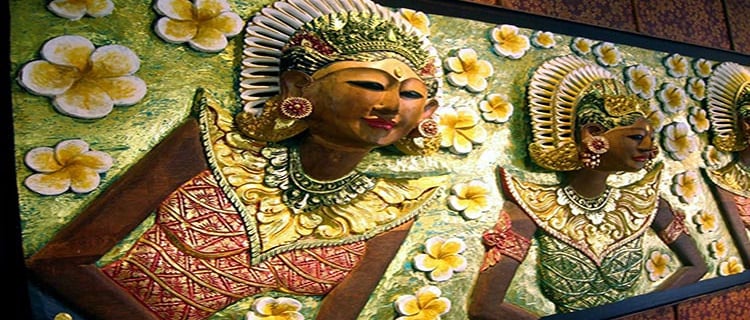

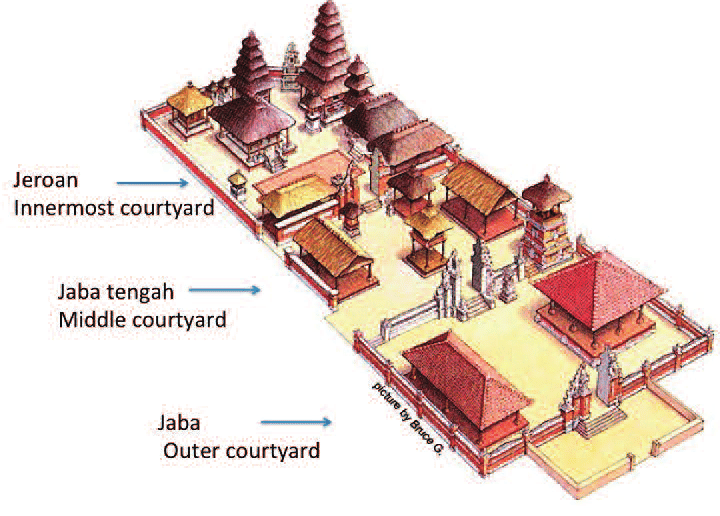

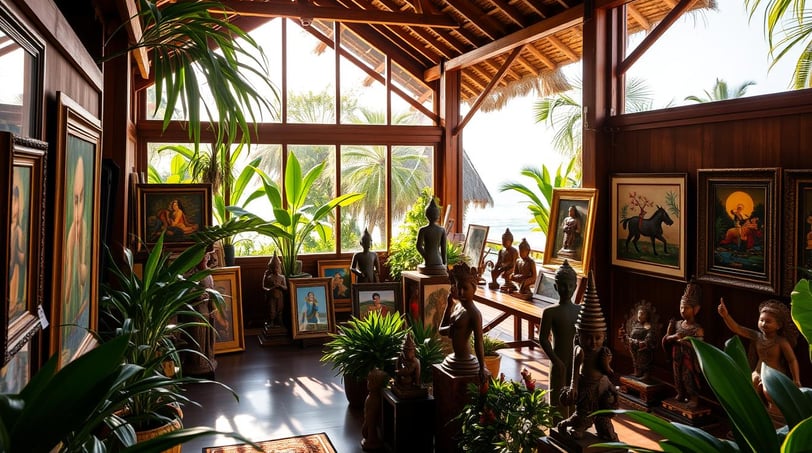

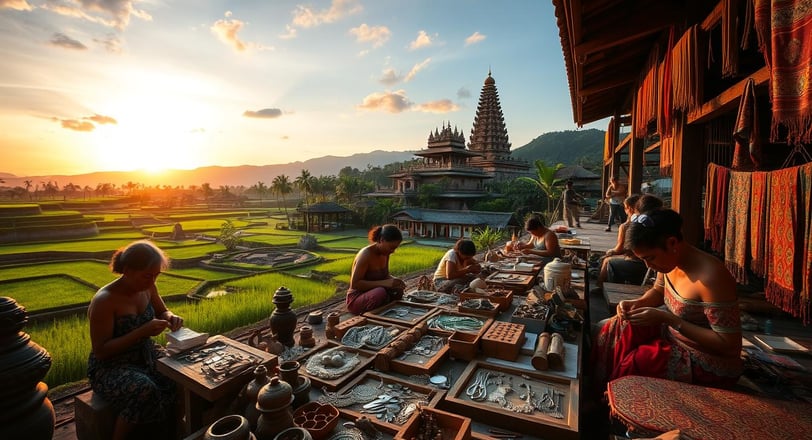

Explore
Discover Sanur's hidden gems and local delights.
Experience
© sanur-bali.com 2025 All rights reserved.
